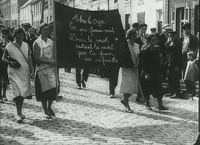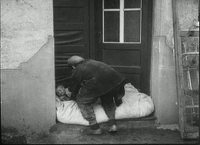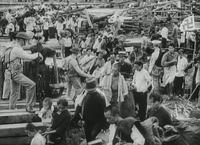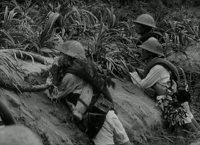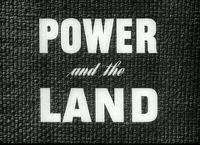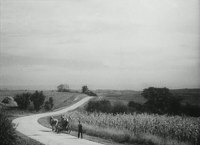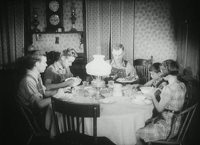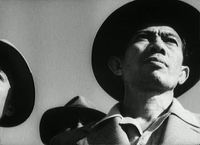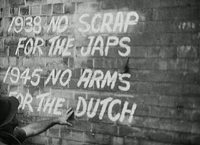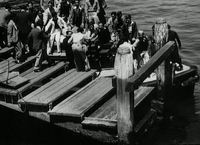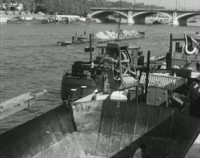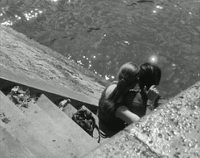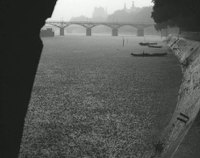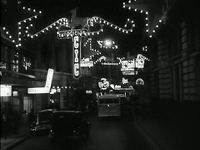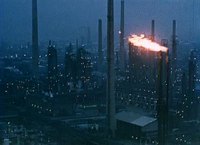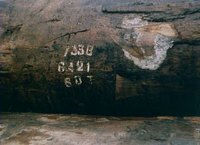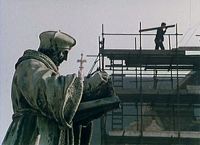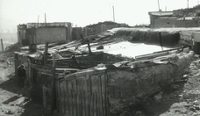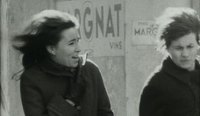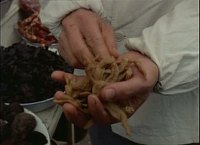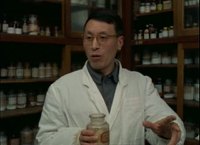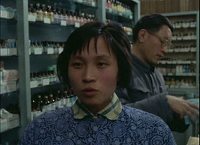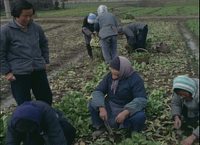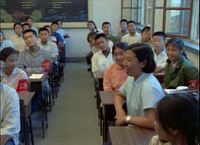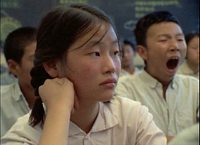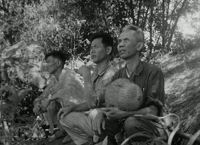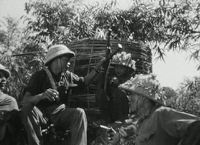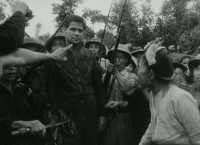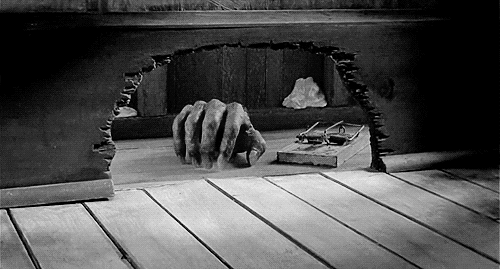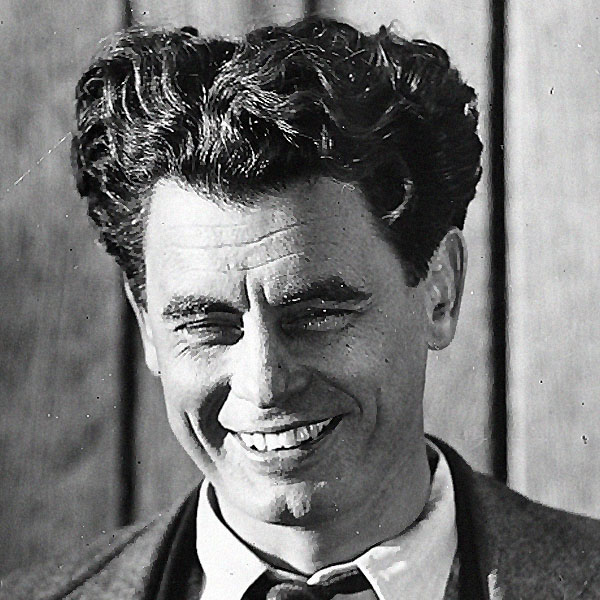
Joris Ivens (Georg Henri Anton Ivens).
(18 de Noviembre de 1898. Nimega, Holanda / 28 de Junio de 1989. París, Francia)
Hijo de un fotógrafo, el joven Ivens realizó su primer filme a los trece años, un cortometraje titulado Brandende Straal. Más tarde estudió ingeniería en Rotterdam y se especializó en fotoquímica en Berlín, trabajando como operario fábricas de Jena y Dresde. En 1927 regresó a su país natal, donde decidió fundar la Film Liga, primer círculo de cinéfilos de Holanda, donde se encargó de estrenar películas inéditas en los cines de ese país, y dirigió su primer filme profesional, De Brug (El puente, 1928). Interesado por los temas sociales y por la teoría del cinematógrafo, Ivens trabajó a lo largo de su vida en muchos países, filmando documentales en lugares tan distintos como la URSS (Konsomol, 1932), España (Spanish Earth, 1937), China durante la guerra con el Japón (Los 400 millones. 1939), los Estados Unidos durante el gobierno Roosevelt (The Power and the Land, 1940), Cuba (Carnet de viaje, 1961) o Vietman (El pueblo y sus fusiles, 1969).
Estos ripeos provienen de la edicicón en 5 DVDs de sus obras completas editadas por la Joris Ivens European Foundation.
1.- De wigwam (Joris Ivens, 1912)
On the age of 13 Joris Ivens was fond of Cowboys and Indians stories, so he decided to invent one himself. He made a script and used a camera from his father's shop. This became his first film Wigwam, with his own family as cast. Black Eagle, a bad indian, kidnaps the daughter of a farmer's family. Flaming Arrow, played by the young Joris Ivens, saves the child from the kidnapper and brings it back to her family. No better conclusion than smoking a piece pipe.
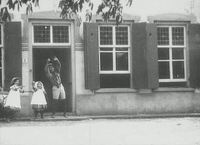
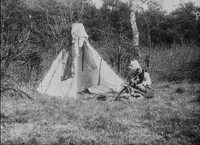

2.- Études de mouvements à Paris (Joris Ivens, 1927)
Images of mostly traffic in Paris, a.o. seen from the appartment of Germaine Krull or shot while walking through the city with her. Here already the influence of the Russina avant-garde films can be seen clearly, e.g. when looking at the diagonal frame compositions.
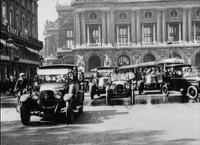
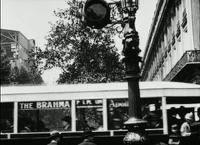
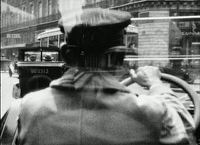
3.- De brug (The bridge) (Joris Ivens, 1928)
The vertical lift-bridge in Rotterdam is the object of study in The Bridge. Normally it seems to be a very static object, but Joris Ivens made a very dynamic film out of it. "For me, the bridge consisted of a laboratory of movements, tints, forms, contrasts, rythms and the relationship between all these phenomena". The film was immediately recognised as a masterpiece by international critics and colleague filmmakers; Joris Ivens was at once the most famous avant-garde filmmaker of the Netherlands.
Joris Ivens: 'At the moment of editing the film I was is such a state of creative tension, I dared not put my scissors into the film stock… I worked every night with the fire and enthusiasm of a pioneer that has just discovered virgin territory'. (Aan welke kant en in welk heelal, Amsterdam, 1983, second autobiography, published by Meulenhoff, page 66)

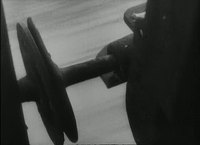

4.- Regen (Rain) (Joris Ivens, 1929)
Rain is a film poem (Cine Poème) about the rise and demise of a rain shower in Amsterdam, as many capitals were filmed by avant-garde filmmakers in the 1920's (a.o. Moskow, Berlin, Paris, New York). The film is impressionistic and composed following musical guidelines. It took Ivens over two years to shoot enough rain showers on different locations in the city to be able to compose this film.
In 1932/33 Helen van Dongen made a sound version of Rain with music from Lou Lichtveld (alias from Albert Helman). Afterwards more composers would be inspired to write music to this film, like Hanns Eisler in 1941 with Vierzehn Arten den Regen zu beschreiben.


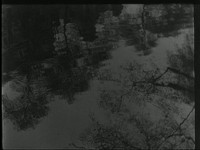
5.- Philips Radio (Joris Ivens, 1931)
Philips Radio is considered the third important Dutch avant-garde film of Joris Ivens, after The Bridge and Rain. The film was commissioned by Philips in order to show the modern production process of radio's in the factories and offices in Eindhoven. Only in a later stage of the shootings it was decided to use the latest film sound technologies in studios in France and make the first Dutch sound film.



6.- Nieuwe Gronden (New Earth) (Joris Ivens, 1933)
The Zuiderzee Works episode of We Are Building was elaborated to the much longer film Zuiderzee by Joris Ivens in 1930. In 1934 Ivens used the same material, and additional footage, to make another version: New Earth. This time the film got a political message, and the editing became more compact and stronger, sustained by the stirring Music of Hanns Eisler. After the part on the reclamation and the closing of the dyke the film continues with images of the economic crisis and the poverty among labourers. Ivens opposes this with the speculation on the market: those who helped with the reclamation of new land for agriculture are now unemployed and starving, while grain is dumped at see to keep the prices up. The closing of the dyke is still one of the strongest editing sequences in the films of Joris Ivens.
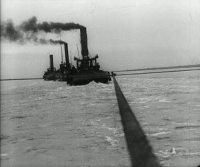
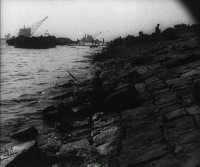

7.- Komsomol (Joris Ivens, 1933)
Documentary about the building of blast furnaces by the communist youth workers organisation Komsomol, constructed as part of the first five year plan of Stalin's Soviet Union. The film is set Magnitogorsk in the de Ural, where an industrial city of over 200.000 people was built in just a few years, and in the Kubas basin in Siberia. The film is a tribute to the achievements of the volunteers, the Komsomol, but does not show the dark side of history: the thousands of imprisoned Kulach doing hard labour under terrible conditions. Influenced by the Russian filmmaker Vsevolod Pudovkin, Ivens tells the story by following one non-fiction character, a non-actor, who re-enacted the scenes. this form of 'personalised story', which we would call docudrama, reappears after this first attempt in Komsomol in many Ivens films.
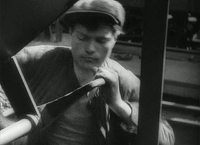
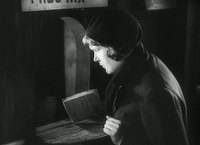
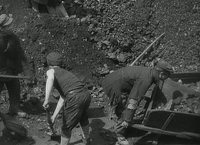
Video: Xvid 1600-1800 Kbps 640x464 29,97 FPS
Audio MP3 128 kbps 48 KHz
